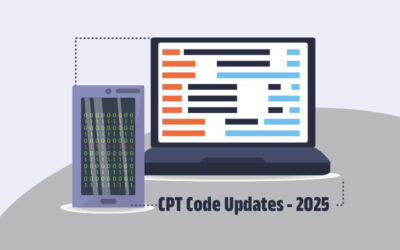Medical, surgical, and diagnostic procedures and services are described by Category I CPT codes using five-digit numerical sequences. Category II CPT codes provide additional information to Category I CPT codes, which streamlines administrative work and tracks the performance of certain tests or procedures. However, Category II codes may not provide important information about the details of a procedure, such as on which side of the body a surgery was performed or whether a procedure was discontinued due to patient safety concerns. The American Medical Association (AMA) created CPT modifiers to fill this gap.
Characteristics of CPT modifiers
- CPT modifiers are always two characters
- They are added to the end of a CPT code with a hyphen
- Most modifiers are numeric though a few are alphanumeric
- Functional modifiers represent the functional impairment and affect reimbursement
- Informational” modifiers do not impact reimbursement and should be listed after the functional modifier
CPT modifiers may indicate:
- Whether a service or procedure has a professional component or a technical component
- If multiple procedures were performed or only part of a service was performed
- Why a procedure was necessary
- The location on the body where the procedure was performed
- Whether the service or procedure was performed by more than one physician
- Whether a service or procedure was provided more than once
- Unusual events occurred
- An add-on or additional service was performed
- Other information that may be vital to a claim’s specific reimbursement status
Common CPT modifiers and How they are Applied
- 52 Reduced Services
- 53 Discontinued procedure
- 59 Distinct procedural service
- 79 Unrelated procedure or service performed by the same physician during the postoperative procedure
Common letter-based modifiers include:
- LT left side of the body
- RT right side of the body
- GC service performed by residents or students under the guidance of a teaching physician
- Using modifier -52 Reduced Services: Under certain circumstances, a service or procedure may be partially reduced or eliminated at the physician’s discretion. Modifier 52 applies if the provider plans all along to provide a “lesser” procedure or service, which no other CPT® code better describes or when the provider electively cancels a service prior to completion. CPT Assistant (January 2015) demonstrates valid application of modifier 52 with the following example:
CPT code 38572: “Laparoscopy, surgical; with bilateral total pelvic lymphadenectomy and peri-aortic lymph node sampling (biopsy), single or multiple
Suppose the surgeon removes all nodes are except the internal iliac nodes. In this case, modifier 52 can be appended to code 38572 when reporting the removal of all nodes except the internal iliac. - Using modifier -59 Distinct Procedural Service: Modifier 59 can be used to indicate that a procedure or service was distinct or independent from other services performed on the same day. This may represent a different session or patient encounter, different procedure or surgery; a different location, different site or organ system, separate incision/excision, separate lesion, or separate injury (or area of injury in extensive injuries) not ordinarily encountered or performed on the same day by the same physician. Modifier 59 is used appropriately when the procedures are performed in different encounters on the same day. A CMS Modifier article provides the following example of applying modifier 59:
CPT Code 93015 – Cardiovascular stress test using maximal or submaximal treadmill or bicycle exercise, continuous electrocardiographic monitoring, and/or pharmacological stress; with supervision, interpretation and report.
CPT Code 93040 – Rhythm ECG, 1 – 3 leads; with interpretation and report.
Modifier 59 may be reported if the rhythm ECG is performed at a different encounter than the cardiovascular stress test. If a rhythm ECG is performed during the cardiovascular stress test encounter, CPT code 93040 should not be reported and modifier 59 should not be used. - Using -LT procedure on the left side of the body: CPT code 19302 partial mastectomy of the left breast. In this case modifier -LT would need to be appended to indicate that the procedure was performed on the left side of body so that the code reads 19302-LT. Suppose the surgeon decides to stop the procedure because the patient is at risk. This circumstance may be reported by adding modifier 53 to the code reported by the physician for the discontinued procedure. The appropriate CPT code to report would be: 19302-LT-53. Usually a complex procedure like mastectomy would have numerous additional codes.
Valid and appropriate use of CPT modifiers can result in additional payment, but if the wrong modifier is used it can lead to payment denials. Expert coders in medical coding companies know how modifiers impact practice reimbursement including payer considerations and can apply the guidelines to determine the best and most appropriate modifiers that apply to major and minor procedures.




